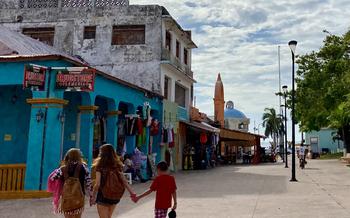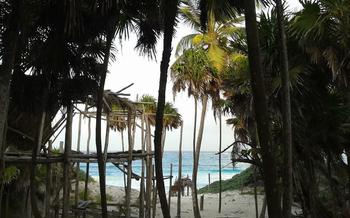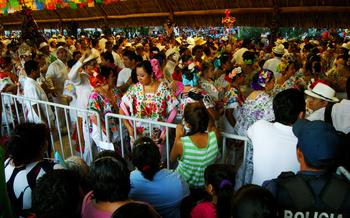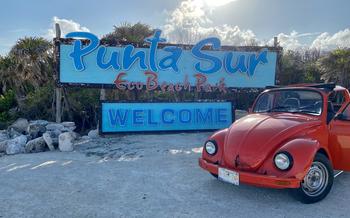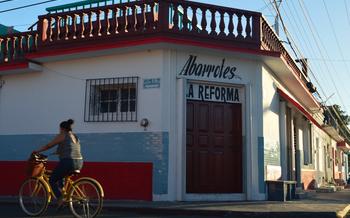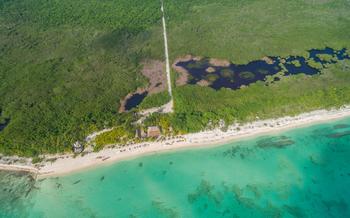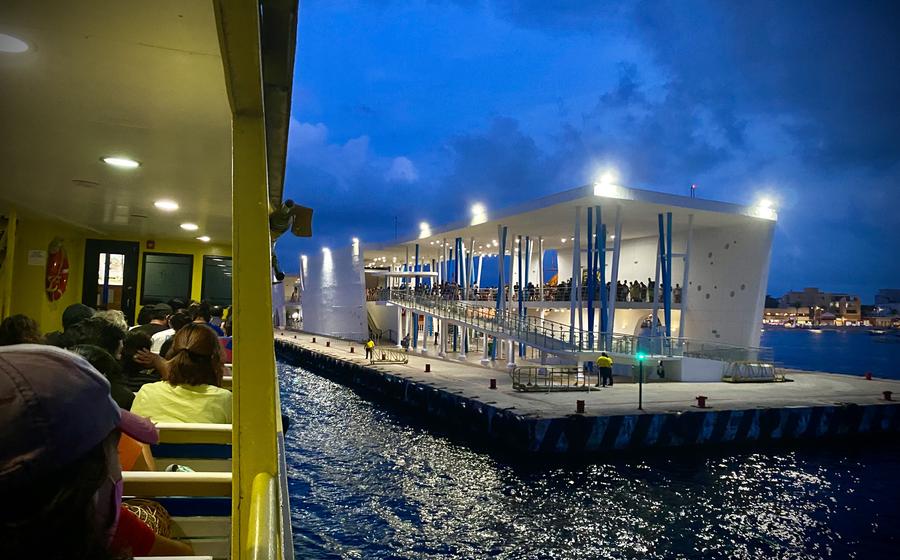
Cozumel Turtle Nesting Sites
- The Wonder of Cozumel’s Turtles
- Turtle Nesting Season in Cozumel
- Top Turtle Nesting Sites in Cozumel
- Visiting Turtle Nesting Sites
- Turtle Conservation Efforts in Cozumel
- The Importance of Sea Turtles
- Threats to Turtles in Cozumel
- Turtle Watching Tours in Cozumel
- Witnessing a Turtle Hatching
- Turtle Research and Education in Cozumel
- Turtle-Friendly Hotels and Resorts in Cozumel
- Souvenirs and Turtle Conservation:
- Volunteering for Turtle Conservation in Cozumel
- The Future of Turtle Conservation in Cozumel
- Insider Tip:
The Wonder of Cozumel’s Turtles
Cozumel, a mesmerizing island nestled in the Caribbean Sea, harbors a captivating secret – its pristine shores serve as a sanctuary for some of the most magnificent creatures on Earth: sea turtles. These gentle giants, with their graceful movements and captivating shells, have made Cozumel their nesting ground, transforming the island into a haven for turtle enthusiasts and conservationists alike. Every year, hundreds of turtles embark on an awe-inspiring journey to these shores, drawn by the promise of safe haven and the continuation of their species. The sight of these majestic creatures gliding through the crystal-clear waters, their flippers propelling them with effortless grace, is a spectacle that leaves an indelible mark on the soul.
Cozumel plays a pivotal role in the survival of these ancient mariners, providing a sanctuary for five of the seven sea turtle species: the green turtle, the loggerhead turtle, the hawksbill turtle, the Kemp's ridley turtle, and the critically endangered leatherback turtle. These gentle giants undertake arduous migrations across vast oceans, guided by an innate sense of direction, only to return to the very shores where they were born, completing the circle of life. Their resilience and determination serve as a testament to the wonders of nature and the importance of protecting these incredible creatures.
The conservation of sea turtles is of paramount importance, as these gentle giants face a multitude of threats, including habitat loss, pollution, and climate change. Their slow reproductive cycle and susceptibility to human activities make them particularly vulnerable. It is our collective responsibility to safeguard their existence, ensuring that future generations can continue to witness the awe-inspiring sight of turtles nesting on the shores of Cozumel.
Once, during a snorkeling excursion, I had the privilege of encountering a majestic green turtle. As I glided through the crystal-clear waters, a shadow caught my eye. Turning, I beheld a magnificent creature, its shell adorned with vibrant patterns, swimming effortlessly alongside me. Its eyes, filled with an ancient wisdom, seemed to pierce through me, connecting us in a moment of profound understanding. The encounter left me with a deep sense of awe and respect for these extraordinary creatures, further fueling my passion for their conservation.
Turtle Nesting Season in Cozumel
Turtle nesting season in Cozumel typically occurs from May to September, with the peak season falling between June and August. During this time, thousands of turtles, including loggerheads, green turtles, and hawksbills, migrate to the island's shores to lay their eggs.
The process of turtle nesting is fascinating to observe. Female turtles emerge from the ocean at night and crawl up the beach, using their powerful flippers to dig a nest in the sand. Once the nest is complete, the turtle will lay anywhere from 50 to 200 eggs before covering the nest with sand and returning to the ocean.
Turtle nesting behavior is influenced by a variety of factors, including the moon phase, the tide, and the weather. Turtles prefer to nest on calm nights with a low tide, and they are more likely to nest under the cover of darkness.
Witnessing a turtle nesting is a truly unforgettable experience. It is a reminder of the beauty and fragility of these ancient creatures and the importance of protecting their nesting grounds.
Top Turtle Nesting Sites in Cozumel
Cozumel boasts several pristine turtle nesting sites that offer visitors the chance to witness these magnificent creatures up close. Here are some of the top nesting sites on the island:
-
Punta Sur: Located at the southernmost tip of Cozumel, Punta Sur is a renowned turtle nesting site known for its beautiful beach and crystal-clear waters. Visitors can take a guided tour of the park and learn about the turtles and their nesting habits.
-
Playa Palancar: Considered one of the best snorkeling spots in Cozumel, Playa Palancar is also a popular nesting site for turtles. Snorkelers can swim alongside turtles and observe them in their natural habitat.
-
El Cielo: This shallow sandbar is a favorite spot for turtles to nest due to its calm waters and abundance of seagrass. Visitors can take a boat tour to El Cielo and snorkel or swim with the turtles.
-
Chankanaab Lagoon: Located in the Chankanaab National Park, this lagoon is home to a variety of marine life, including turtles. Visitors can snorkel or dive in the lagoon and encounter turtles in their natural environment.
-
San Gervasio: Situated in the heart of Cozumel, San Gervasio is an ancient Mayan city that also serves as a turtle nesting site. Visitors can explore the Mayan ruins and learn about the history of the island while observing turtles nesting on the beach.
Visiting Turtle Nesting Sites
When visiting turtle nesting sites, it is crucial to prioritize the well-being of the turtles and their environment. Respecting their privacy and minimizing disturbances is paramount.
-
Maintain a safe distance from the turtles and avoid using flash photography, as it can disorient them.
-
Remain quiet and avoid sudden movements to prevent spooking the turtles.
-
Refrain from touching or handling the turtles or their nests, as it can cause stress and harm.
-
Be mindful of your surroundings and avoid leaving trash or other items on the beach.
-
Follow any regulations or guidelines set by the local authorities or conservation organizations.
-
If you encounter a turtle in distress, contact the appropriate authorities or conservation organizations for assistance.
By following these guidelines, you can help ensure a safe and enjoyable experience for both yourself and the turtles.
Turtle Conservation Efforts in Cozumel
Turtle conservation is of paramount importance in Cozumel, given the island's status as a vital nesting ground for several turtle species. Local organizations and authorities have implemented various initiatives to protect these magnificent creatures and their habitats. One such organization, the Cozumel Turtle Conservation Association (CTCA), plays a crucial role in monitoring nesting sites, conducting research, and raising awareness about turtle conservation. Through their tireless efforts, the CTCA has contributed significantly to the protection of turtles on the island.
Another key player in turtle conservation is the National Commission of Natural Protected Areas (CONANP), which is responsible for managing and protecting the island's natural resources. CONANP has established strict regulations to minimize human impact on turtle nesting sites and has implemented a program to relocate nests that are at risk from erosion or predation.
Additionally, local businesses and hotels are increasingly recognizing the importance of turtle conservation and are actively involved in protecting these gentle giants. Many hotels have adopted turtle-friendly practices, such as reducing light pollution to prevent hatchlings from becoming disoriented, and offering turtle-watching tours that adhere to responsible guidelines.
The success of turtle conservation efforts in Cozumel is evident in the increasing number of turtles that return to the island each year to nest. This is a testament to the dedication and hard work of conservationists, researchers, and local communities who are committed to ensuring the survival of these ancient mariners.
The Importance of Sea Turtles
Sea turtles play a vital role in maintaining the health and balance of marine ecosystems. They are voracious consumers of jellyfish, which helps to control jellyfish populations and prevent them from becoming a nuisance or a threat to other marine life. Sea turtles also play a role in nutrient cycling, as they transport nutrients from the ocean to the land when they come ashore to nest. In addition, sea turtle nests provide a food source for a variety of other animals, including crabs, birds, and mammals.
Unfortunately, sea turtles are facing a number of threats worldwide, including habitat loss, pollution, and climate change. As a result, sea turtle populations have declined significantly in recent years. It is estimated that the global population of leatherback turtles has declined by over 90% in the past century.
The decline of sea turtle populations is a serious concern, as sea turtles play a vital role in the health of our oceans. If sea turtles were to disappear, it would have a devastating impact on marine ecosystems and could lead to a decline in fish populations and other marine life.
It is important to take action to protect sea turtles and ensure their survival. We can do this by reducing plastic pollution, supporting sustainable fishing practices, and advocating for the protection of sea turtle nesting sites. We can also support organizations that are working to protect sea turtles and educate the public about the importance of these amazing creatures.
Threats to Turtles in Cozumel
Turtles in Cozumel face several threats, both natural and human-induced. Natural threats include predators such as sharks, birds, and crabs, which prey on turtle eggs and hatchlings. However, human activities pose the most significant threats to turtles and their nesting sites.
One of the biggest threats is habitat destruction. As Cozumel continues to develop, more and more coastal areas are being developed for tourism and residential purposes. This results in the loss of nesting beaches and foraging grounds for turtles.
Another major threat is pollution. Plastic pollution is a significant problem in Cozumel, as it can entangle and kill turtles. Light pollution from coastal development can also disorient turtles, making it difficult for them to navigate and find their way back to the sea.
Climate change is also a growing threat to turtles. Rising sea levels and changing weather patterns can impact turtle nesting behavior and success. Additionally, increased temperatures can lead to higher rates of egg mortality.
To protect turtles in Cozumel, it is essential to address these threats and implement conservation measures. This includes reducing plastic pollution, minimizing light pollution, protecting nesting beaches, and raising awareness about the importance of turtle conservation.
Turtle Watching Tours in Cozumel
There are a variety of turtle watching tours available in Cozumel, catering to different interests and budgets. Some tours offer a basic boat trip to turtle nesting sites, while others include guided walks on the beach, snorkeling or diving opportunities, and educational presentations about turtles.
Cost and Duration:
The cost of turtle watching tours varies depending on the length of the tour, the size of the group, and the inclusions. Basic boat tours typically start at around $50 per person, while more comprehensive tours can cost upwards of $100. Tours typically last for two to three hours but can be longer or shorter depending on the operator.
What to Expect:
On a typical turtle watching tour, you can expect to:
- Boat ride: You will be taken by boat to a turtle nesting site.
- Guided walk: You will be guided along the beach by a knowledgeable guide who will help you spot turtles and learn about their nesting behavior.
- Snorkeling or diving: Some tours include the opportunity to snorkel or dive near the turtle nesting sites, where you may see turtles swimming or feeding.
- Educational presentation: Many tours include an educational presentation about turtles, their biology, and the importance of conservation.
Choosing a Tour:
When choosing a turtle watching tour, it is important to consider your interests and budget. If you are interested in learning more about turtles and their conservation, choose a tour that includes an educational presentation. If you are interested in snorkeling or diving, choose a tour that includes these activities.
Special Requirements:
Some turtle watching tours may have special requirements, such as a minimum age or swimming ability. It is important to check with the tour operator before booking to make sure that you meet all of the requirements.
Witnessing a Turtle Hatching
Witnessing a turtle hatching is an awe-inspiring and unforgettable experience. These gentle creatures emerge from their sandy nests, determined to make their way to the ocean for the first time. The process of turtle hatching can take several hours, and it is essential to be patient and respectful of the turtles.
Once the turtles have hatched, they will instinctively crawl towards the brightest light, which is usually the moonlight or starlight reflecting off the ocean. It is important to avoid using flashlights or other bright lights, as this can disorient the turtles and cause them to go in the wrong direction.
As the turtles make their way to the ocean, they may encounter obstacles such as rocks, roots, and other debris. It is important to avoid touching or handling the turtles, as this can stress them out and make them more vulnerable to predators.
Once the turtles reach the ocean, they will swim away and begin their long journey to adulthood. It is estimated that only about one in 1,000 turtle hatchlings will survive to adulthood, due to the many threats they face in the wild.
By witnessing a turtle hatching, you will gain a deeper appreciation for these amazing creatures and the importance of their conservation. It is a truly magical experience that will stay with you for a lifetime.
Turtle Research and Education in Cozumel
Understanding the behavior and habitat needs of sea turtles is essential for their effective conservation. Cozumel is a significant hub for turtle research, housing numerous organizations dedicated to studying and protecting these magnificent creatures. These organizations conduct in-depth research on turtle nesting patterns, migration routes, and population dynamics. Their work helps identify critical threats and informs conservation strategies.
One of the most renowned research organizations in Cozumel is the Cozumel Sea Turtle Conservation Program. This program has been actively studying sea turtles for over 20 years, contributing significant knowledge about their behavior and ecology. Their research focuses on monitoring nesting activity, tagging turtles to track their movements, and assessing the impacts of human activities on turtle populations.
Additionally, educational programs play a vital role in raising awareness and fostering a sense of responsibility towards turtle conservation. Various organizations in Cozumel offer educational tours, presentations, and workshops to educate visitors and locals about the importance of sea turtles and the threats they face. These programs help create a community of informed individuals who can actively support conservation efforts.
By combining research and education, Cozumel serves as a hub for turtle conservation, contributing to the protection and recovery of these essential marine species.
Turtle-Friendly Hotels and Resorts in Cozumel
Cozumel is home to a number of hotels and resorts that are committed to turtle conservation. These hotels and resorts are taking steps to reduce their impact on the environment and to create a more turtle-friendly environment.
Some of the ways that these hotels and resorts are helping turtles include:
- Using turtle-friendly lighting that does not disorient turtles or hatchlings.
- Reducing the use of plastic and styrofoam products.
- Recycling and composting waste.
- Protecting turtle nesting sites and hatchlings.
- Educating guests about turtle conservation.
When choosing a hotel or resort in Cozumel, it is important to consider the hotel's commitment to turtle conservation. By choosing a turtle-friendly hotel or resort, you can help to protect these endangered creatures.
Some of the turtle-friendly hotels and resorts in Cozumel include:
- Iberostar Cozumel: This resort has a dedicated turtle conservation program and offers guests the opportunity to learn about turtles and volunteer for conservation activities.
- Secrets Aura Cozumel: This resort is located on a turtle nesting beach and offers guests the chance to witness turtle nesting and hatching.
- Grand Park Royal Cozumel: This resort has a turtle hatchery and offers guests the opportunity to learn about turtle conservation and release turtle hatchlings into the ocean.
By choosing to stay at a turtle-friendly hotel or resort, you can help to make a difference for turtles in Cozumel.
Souvenirs and Turtle Conservation:
When shopping for souvenirs in Cozumel, it is important to be mindful of the impact that your purchases can have on turtles. Avoid buying souvenirs made from turtle shells or other turtle products, as this contributes to the demand for turtle hunting. Instead, opt for turtle-friendly souvenirs such as t-shirts, hats, or jewelry made from sustainable materials. By choosing turtle-friendly souvenirs, you can help to reduce the demand for turtle products and support conservation efforts on the island.
Some popular turtle-friendly souvenirs include:
- T-shirts and hats with turtle designs made from organic cotton or recycled materials.
- Jewelry made from recycled glass or metals that feature turtle motifs.
- Hand-painted turtle figurines made from clay or ceramic.
- Books and DVDs about turtles and their conservation.
- Turtle-themed artwork and photography.
By choosing turtle-friendly souvenirs, you can help to support turtle conservation efforts in Cozumel and ensure that these magnificent creatures continue to thrive for generations to come.
Volunteering for Turtle Conservation in Cozumel
If you're passionate about sea turtles and want to make a difference, consider volunteering for turtle conservation in Cozumel. Several organizations on the island offer volunteer opportunities, including the Cozumel Sea Turtle Conservation Center, the Amigos de Sian Ka'an, and the National Marine Park.
As a volunteer, you'll have the chance to participate in various activities, such as monitoring turtle nests, collecting data on turtle nesting behavior, and assisting with turtle hatchling releases. You'll also learn about the threats that turtles face and the conservation efforts being implemented to protect them.
Volunteering for turtle conservation is a rewarding and educational experience that allows you to give back to the environment and make a real difference in the lives of these amazing creatures.
Here are some stories of volunteers who have made a difference:
-
Sarah, a volunteer from the United States, helped to monitor over 100 turtle nests during her time in Cozumel. She also assisted with the release of over 1,000 turtle hatchlings.
-
John, a volunteer from the United Kingdom, worked with local researchers to collect data on turtle nesting behavior. His data helped to identify important nesting sites and inform conservation management plans.
-
Maria, a volunteer from Mexico, educated local communities about the importance of turtle conservation. She also helped to organize beach cleanups and reduce plastic pollution on the island.
The Future of Turtle Conservation in Cozumel
While Cozumel has made significant strides in turtle conservation, there is still much work to be done. The biggest challenges facing turtle conservation on the island include habitat loss, pollution, and climate change. To address these challenges, it is essential to continue to raise awareness about the importance of turtle conservation and to implement effective conservation strategies.
One of the most important things that can be done to protect turtles is to protect their nesting habitat. This means reducing the amount of development on beaches and coastal areas, and restoring degraded habitats. It is also important to reduce pollution, both in the water and on land. This means reducing the use of plastics and other pollutants, and properly disposing of waste.
Climate change is another major threat to turtles. As the oceans warm, turtle nesting beaches are becoming more vulnerable to erosion and flooding. To address this challenge, it is important to reduce greenhouse gas emissions and to help turtles adapt to the changing climate.
By working together, we can create a future where turtles continue to thrive in Cozumel. There are already a number of new initiatives and projects underway that are helping to make a difference. For example, the Cozumel Turtle Conservation Program is working to restore turtle nesting beaches and to educate the public about the importance of turtle conservation. The Cozumel Marine Turtle Research Center is conducting research to better understand the threats that turtles face and to develop new conservation strategies.
With continued conservation efforts, we can ensure that turtles continue to be a part of Cozumel's rich and diverse ecosystem for generations to come.
Insider Tip:
For an unforgettable turtle nesting experience, plan your visit during the peak nesting season between May and July. Aim to arrive at the nesting site just before sunset, as turtles typically emerge from the water to nest under the cover of darkness. Pack a flashlight with a red filter to minimize disturbance to the turtles and wear dark, non-reflective clothing to blend into the surroundings. Remember to keep your voice low and avoid using flash photography, as bright lights can deter the turtles from nesting. Patience is key, as it may take some time for the turtles to emerge. But when you witness a turtle nesting, the awe-inspiring sight will create memories that will last a lifetime.
